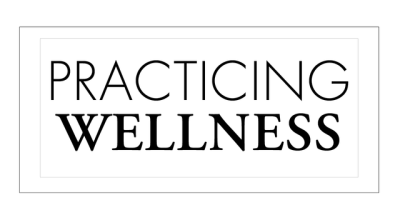
Renowned professor, lecturer, and author Dr. Brené Brown has been studying shame for more than two decades. Shame, she wrote, is “the intensely painful feeling or experience of believing that we are flawed and therefore unworthy of love, belonging, and connection.”1 Through her work, we have begun to understand that shame is truly an epidemic that spreads fear and negative thinking and is highly correlated with addiction, depression, eating disorders, violence, bullying, and aggression.2
With too many of our colleagues in the legal field suffering from substance use and mental health concerns, it’s time we talk about shame and the role it plays in our lives. Brown also helps us differentiate between guilt and shame — namely, that guilt is helpful and adaptive while shame is harmful and destructive.3 The two are often dangerously confused, leading to issues with how we engage in relationships with others, how we give and receive feedback, and how we make decisions, all of which are critical components to practicing law.
As a trained therapist for the past 15 years, I find shame grows and thrives in environments where it is kept secret and silenced. While guilt arises when someone feels they’ve done wrong and is followed by feelings of remorse and attempts at making amends, shame seems to be unspeakable. It’s kept hidden, and individuals experiencing shame fail to make the distinction between the action or perceived transgression and the self.4 Someone who lied internalizes that shame and labels themselves a liar; someone who cheated is a cheater; and someone who made a mistake becomes the mistake. Understanding this phenomenon could have profound implications on how we parent our children; deal with colleagues, friends, and family members; and even how we interact with and represent clients.
Shame is often associated with a past or present experience over which we have very little control5 — feelings experienced by family or criminal defense lawyers who represented dishonorable individuals for heinous crimes, prosecutors unable to get the conviction on which they worked tirelessly, or legal professionals who have struggled with mental health issues in law school or as a practicing attorney, resulting in poor outcomes. I’d venture to assert that most of us have experienced shame at one time or another. It’s a feeling that appears to be a universal emotion arising from an array of circumstances or events.
Understanding shame as toxic and fear-based is backed by neuroscience. The ability for human beings to regulate their internal organs without having to think about them consciously is due to our autonomic nervous system, which is made up of both sympathetic and parasympathetic components.6 Our sympathetic nervous system perceives danger; prepares us for flight, fight, or freeze; and increases our heart rate and blood flow.7 In other words, it’s excitatory. The parasympathetic nervous system, by contrast, calms the body by reducing our heart rate and decreasing arousal.8 After what we’ve learned so far about shame, it is likely no surprise that when someone is faced with shame, the brain reacts as if it were truly facing physical danger by activating the flight, fight, or freeze response. This can cause us to want to slink away or disappear (flight), become aggressive toward those that have shamed us (fight), or even impact our ability to think clearly (freeze).
Though shame is universal, gender impacts how it is experienced. Women tend to internalize humiliation more intensely than men, making them more likely to feel the negative effects of shame, and the same is true for adolescents.9 During interviews investigating the relationship between shame and gender differences, shame for women tends to relate to attempts at “doing it all” perfectly without anyone seeing the hidden struggles of such unrealistic and unattainable demands. It also relates to women’s conflicting experiences of who they are told they’re supposed to be — caretaker, wife, mother, careerist.10 Men, on the other hand, tend to experience shame when they are perceived as weak.11 Understanding shame and its impact is critical to combating it.
Vulnerability, defined as “the quality or state of being exposed to the possibility of being harmed emotionally” or “uncertainty, risk, and emotional exposure,”12 requires us to accept the risks that accompany being emotionally open with ourselves and with others. It is fundamental to emotional and mental health. It means being authentic, transparent, and true to oneself despite fears of rejection. Vulnerability is powerful because it is necessary to combat shame, and the myth that vulnerability equates to weakness is a dangerous one. Only through vulnerability can we understand what triggers our shame and build the courage to begin problem solving and develop shame resiliency.13 Vulnerability makes it possible for us to recognize when we are experiencing shame, practice critical awareness of how the messages that drive shame (I am a flawed human being, I am not good enough, I am unworthy) are irrational, reach out to others for help and support, and begin to openly talk about, and thus quiet, shame.14
The SBM Lawyers and Judges Assistance Program has a team of skilled clinicians on staff ready to help members of the legal community looking to optimize their well-being and address concerns related to substance use or mental health.15 This certainly includes those reading this article who perhaps recognize a tendency to evaluate themselves in an overly harsh manner, are unforgiving in their own self-judgment, and lean toward identifying mistakes not as behaviors but as flaws.
As one of my favorite authors, Charles Dickens, said, “Heaven knows we need never be ashamed of our tears, for they are rain upon the blinding dust of earth, overlying our hard hearts. I was better after I had cried, than before — more sorry, more aware of my own ingratitude, more gentle.”16 To me, this means practicing vulnerability to foster shame resilience, gain insight, and garner greater self-awareness.